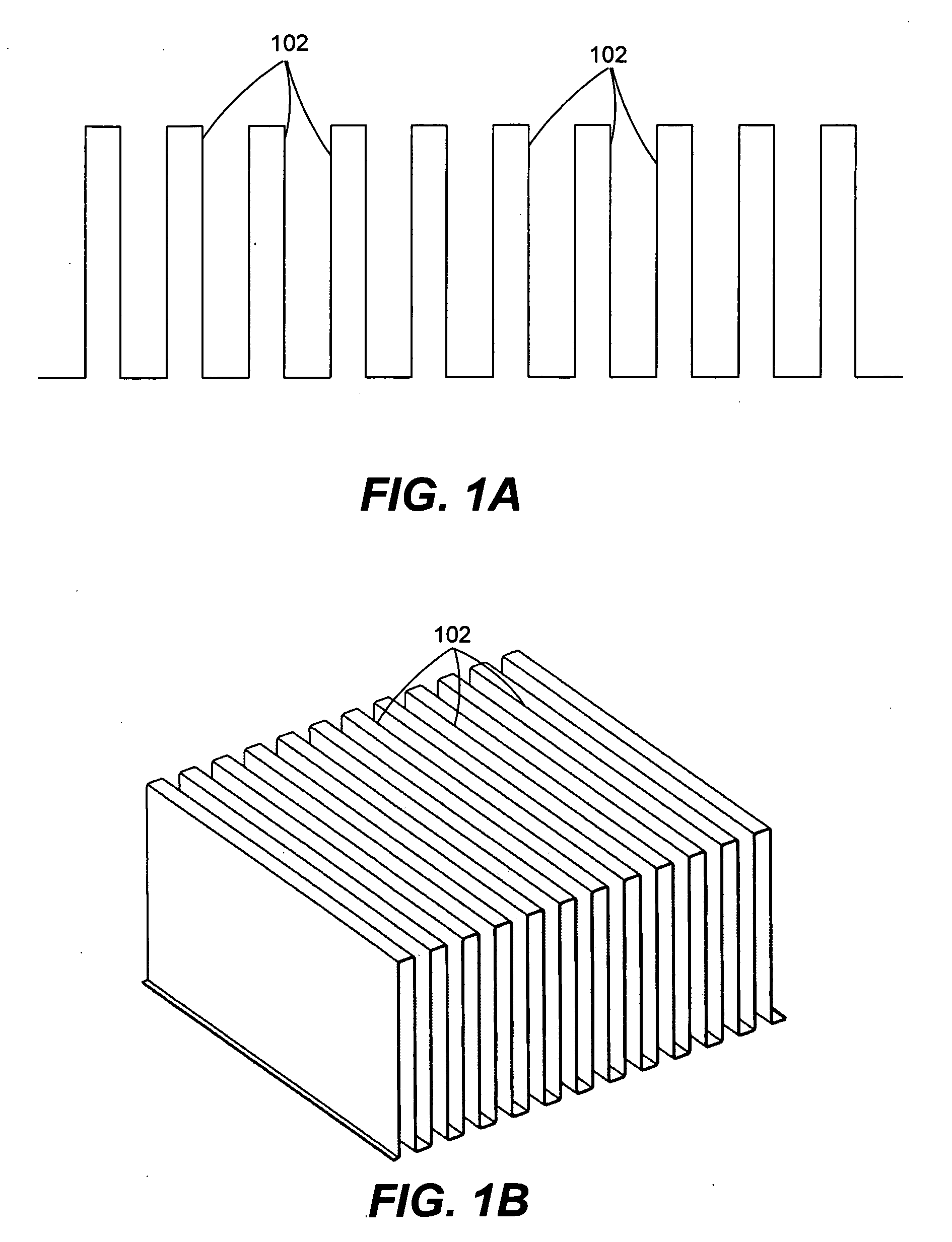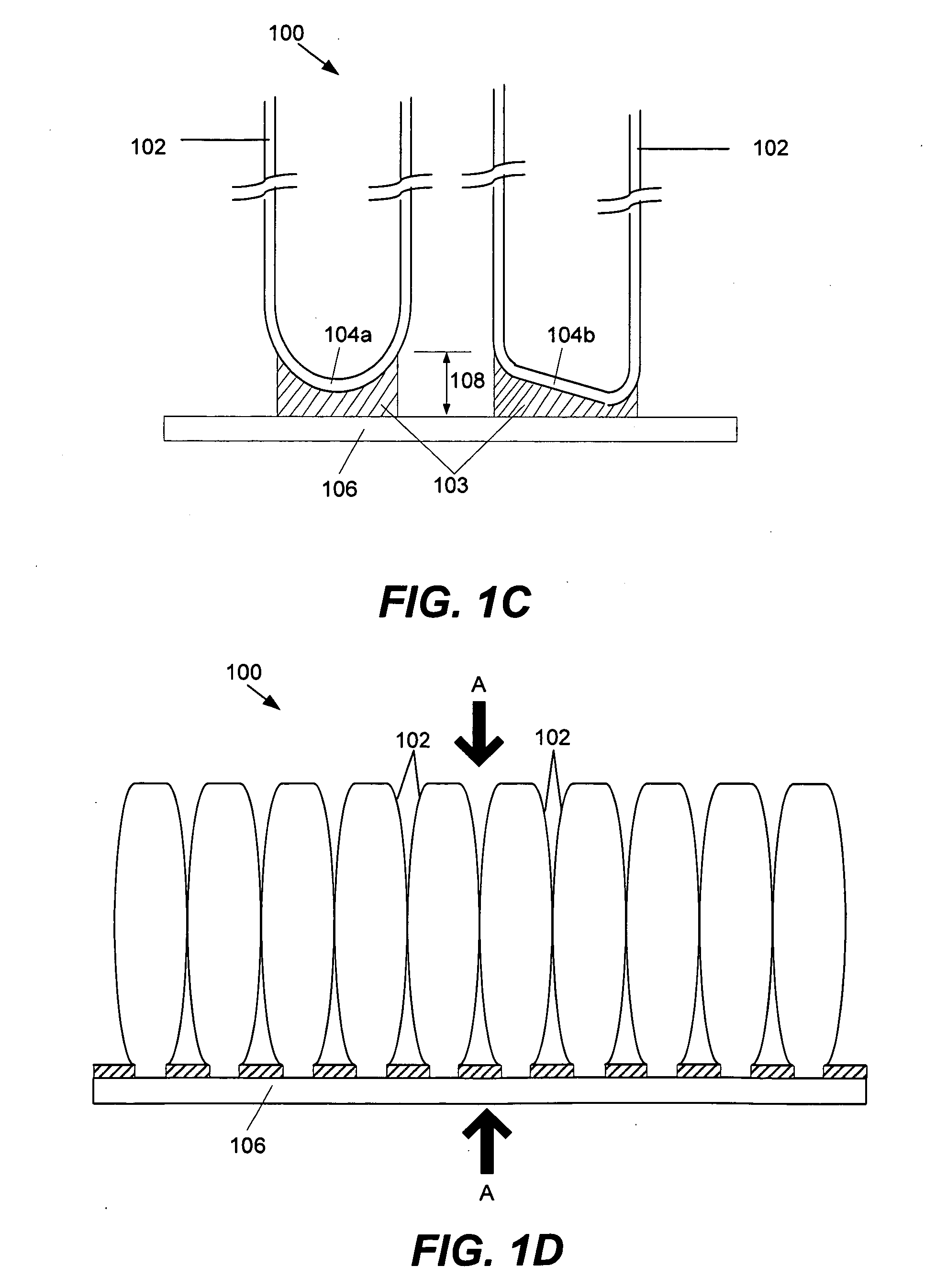Solar receiver
a solar receiver and receiver technology, applied in the field of solar receivers, can solve the problems of increased cost, inefficiency, malfunction, etc., and achieve the effect of reducing the cost of solar receivers, increasing the cost, and improving the efficiency of solar receivers
- Summary
- Abstract
- Description
- Claims
- Application Information
AI Technical Summary
Problems solved by technology
Method used
Image
Examples
example
[0041]Examples are described herein for exemplary purposes only and not intended to be limiting. An example heat sink fin may be made from a continuous sheet of material, such as aluminum. The sheet of material may have a thickness of about 0.020 inches. Each fin may have a fin length of about 5.50 inches and a fin height of about 3 inches. Thus, the ratio of fin height to fin length may be 3 inches / 5.5 inches=0.55.
[0042]Each fin may have a fin pitch of about 0.25 inches and about 5.5 undulations along the fin length axis. Each fin may have an undulation amplitude of about 0.050 inches, an undulation period of about 1 inch, and an undulation radius of about 1.262 inches. The heat sink may be formed to any desired length. In one embodiment, the heat sink may have a length of about 52 inches, which results in the formation of about 208 fins.
[0043]FIGS. 4A and 4B illustrates an embodiment of a stackable solar receiver. FIG. 4A illustrates a cross-sectional side view of a solar receiver...
PUM
 Login to View More
Login to View More Abstract
Description
Claims
Application Information
 Login to View More
Login to View More - R&D
- Intellectual Property
- Life Sciences
- Materials
- Tech Scout
- Unparalleled Data Quality
- Higher Quality Content
- 60% Fewer Hallucinations
Browse by: Latest US Patents, China's latest patents, Technical Efficacy Thesaurus, Application Domain, Technology Topic, Popular Technical Reports.
© 2025 PatSnap. All rights reserved.Legal|Privacy policy|Modern Slavery Act Transparency Statement|Sitemap|About US| Contact US: help@patsnap.com



